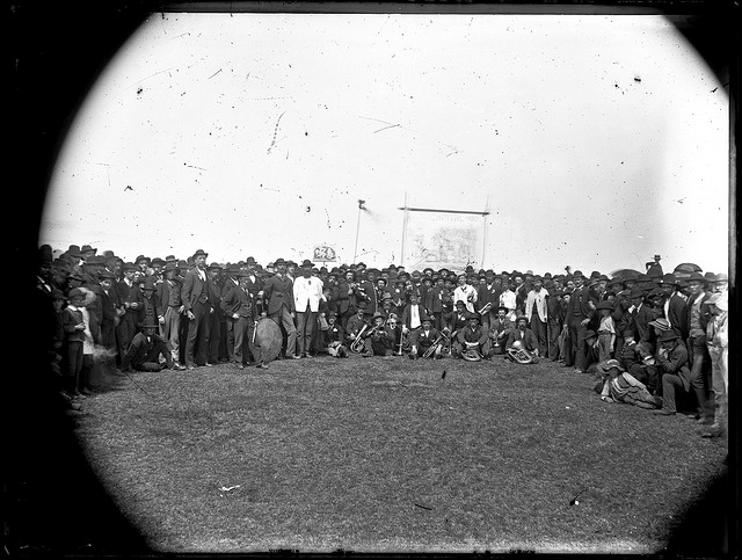Unions
Miners strike gathering, Cooks Hill, 15 September 1888. Ralph Snowball collection. "Then came a calico banner, carried by members of the Burwood Lodge. On one side was a caricature of a body of soldiers leading the Soudan goat, with the inscription, A Little Capital Army ; on the other, working men shaking hands, with the inscription, Peace and Prosperity is our motto."
The Early Days
Before unions began, workers had little leverage to negotiate with companies in matters such as pay and safety. The first union (or lodge) in the Hunter Valley was started in March 1856 at the Newcastle Coal and Copper Company . People were called to lodges by the Bellman. Unions were soon established at the AA Company, Minmi and Tomago sites. There was little cooperation between unions until the Coal Miners' Association of Newcastle was formed in 1860. James Fletcher, who founded one of the earliest unions, Borehole Lodge, became the first President of this Association. This organization charged a joining fee, which was saved for redistribution in times of strike. One of the first major issues addressed by the organization was ventilation. They pressed for government regulated working conditions. Wages were another point of contention, and low coal prices along with an oversupply of labour weakened unions in the late 1860's.
The establishment of the Vend system renewed the involvement of unions. The first major strike in 1888 was due to a power struggle between the collieries and the unions, contributed to by the Vend system. Co-operation between the collieries made the unions unable to bargain for wages or better working conditions.
State and National Collaboration
References
Moore, Fred, Paddy Gorman and Ray Harrison. At the Coalface: The human face of coal miners and their communities: An Oral History of the early days. Sydney: Construction Forestry Mining and Energy Union, 1998. Print
Turner, J W. Coal Mining in Newcastle 1801 - 1900. Newcastle History Monographs No. 9. Newcastle: Newcastle Region Public Library, 1982. Print
